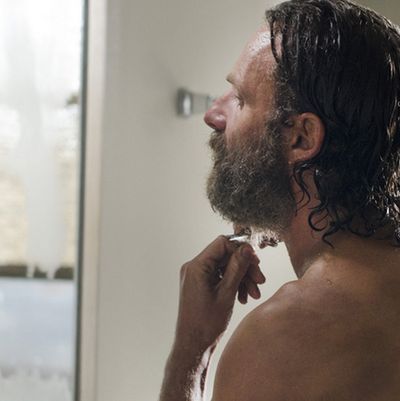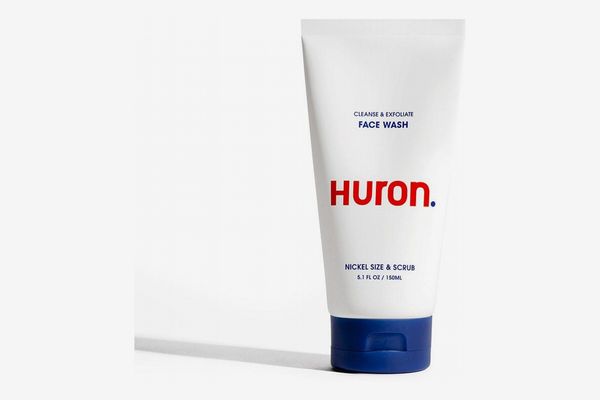
The best beards are free of dirt, tidy, and conditioned and keeping them that way requires regular maintenance in between trips to the barber. Mike DeBroeck, head barber at Movember & Co. Barbershop says that monthly barber visits will help define your beard’s shape and direct the hair follicles to grow in the right direction. But at home DeBroeck suggests trimming your beard “every two weeks to keep the hair styled and looking healthy.” To keep your beard looking tip-top all the time, we talked to DeBroeck and seven other barbers and grooming experts about the best tools to keep in your beard-trimming toolbox.
Five of our eight beard experts recommended Wahl brand clippers and trimmers. Three of them — Roderic Hampton a barber at Miracles Barbershop in Brooklyn, Luca Blandi a stylist at Blandi Salon, and Laura Leverty owner of Paper Hair Salon in Minneapolis — recommended this beard trimmer because it’s professional-grade but the lack of a cord makes it easy to maneuver at home. Blandi told us the main thing to look for in a trimmer is that it comes with “at least four guards” so you can fade your beard into your sideburns and for “options of different lengths.”
Miles Wood Smith, a barber at Murdock London, also recommends a Wahl trimmer but says he prefers the Aqua Blade wet/dry trimmer which comes with a ton of accessories (including 12 guards) for many different uses and types of facial hair. “It cuts super close and is versatile for trimming, shaving, and refining edges, and causes minimal irritation in the process.” Wood Smith says the versatile Aqua Blade works for practically any facial hair need, including guys with full “lumberjack” style beards all the way to men looking to stylishly “maintain stubble.”
Rob Thompson, a master barber, barber instructor, and a member of the Kentucky State Barber Board, agrees that a variety of guards is important but prefers the Andis Professional Fade Master Clippers — Hampton is also a fan — because they’re “tried and true clippers available to the public that you’ll find in every master barber’s toolbox.” Like the Wahl Designer Trimmer, the Andis Fade Master Clippers are adjustable and come with guard attachments — five in total. Thompson says guards are important because they can adjust the cutting depth of your clippers calling them “training wheels for your clippers and very helpful for the novice.”
Three of the barbers we spoke to — Hampton; Alex Tyef, second-generation owner of Gino’s Classic Barber Shoppe in Atlanta; and Arthur Iskhakov of Barbers Blueprint in New York — recommend the Andis T Outliner for perfecting the edges of your beard, neckline, and sideburns. Iskhakov says all barbers use this buzzer, and that “it’s very well-known amongst barbers.”
Best Safety Razors
Tyef told us he recommends this Parker adjustable safety razor which allows you to customize the blade angle to accommodate differences in skin type, facial hair thickness, and experience level. The Parker brand, which is one of the best known in safety razors, also comes recommended by four of the experts we spoke to in our article about the best safety razors.
Iskhakov recommends this safety razor from direct-to-consumer grooming brand Bevel for its “crisp and clean design” saying it has the “perfect balance of weight and dimension to deliver a smooth. clean shave.” Bevel also comes recommended by master barber Julien Howard at New York City’s Blind Barber, who we spoke to for our article about the best safety razors.
For rogue beard hairs or for careful mustache trimming, every one of our experts recommended a small pair of dedicated facial hair scissors. “Don’t use them to cut anything else” says Leverty “not tags on clothes, not your fingernails, not even paper. This will keep them sharp for a longer period of time.” Thompson and Leverty agreed that these scissors from Tweezerman are ideal for beginners because of their rounded safety tip. And Thompson likes that the finger and thumb holes are roomy, saying “sometimes that’s an issue.” For more experienced bearded men, Leverty also likes this pair of Sanguine scissors which, with their pointed tips, can deliver more precise cuts.
Wood Smith told us that the best tool for beard-trimming is a good comb because “it helps guide and create angles as you’re trimming.” While all of our experts had some type of comb on their list, Tyef says to look for a wooden one rather than a plastic because it can cause static in facial hair. Iskhakov specifically recommends this comb because of the quality of wood and affordable price.
According to our experts, beard combing and beard brushing go hand in hand. The former helps detangle and prepare your beard for trimming and the latter helps refine the shape of your beard and distribute important facial oils from root to tip. Thompson says the brush “should be soft enough to not irritate the skin but course enough to actually brush out the beard.” All of our experts recommend using some sort of small boar-bristle brush to get the job done. Both Tyef and Iskhakov like the Diane beard brush because it’s not too expensive and popular with clients.
While still new to them, three of our grooming experts — Blandi, Iskhakov, and Leverty — suggest using a heated beard brush to finish off your trim. This one comes recommended by Blandi, who says it’s like a straight iron for beards that works to “take the frizz off.” According to Blandi, longer beards are very popular at the moment and this tool can help keep them from looking “disheveled.”
Best Grooming Products for Beard Trimming
Tyef told us that “the beard is probably the dirtiest part of any man’s body” (mostly because a ton of men neglect cleaning it) and that it’s important to clean both the facial hair and the skin underneath it. Leverty told us that she starts every beard trim in her salon with a vigorous beard wash to remove dirt and dead skin that might be hiding underneath the hair. She suggests finding a face wash that’s both gentle and exfoliating to help prevent beard dandruff and clogged pores. Leverty likes this sulfate-free cleanser from Huron because of its creamy “shave cream-like” texture and tiny bamboo particles that are easy to work into the skin under a beard, adding that if you have a longer, thicker beard, you may need to use a little more product.
Several of our experts said that beard hair is prone to dryness because most men’s faces don’t produce enough oil to keep long beard hairs moisturized. Tyef says that in all three of his shops in Atlanta they use this Paul Mitchell Hair and Body moisturizer on both beards and scalps as a leave-in conditioner, balm, or styling cream. “We sell the liter bottles,” he says. “They fly off the shelves.”
If you’re using a safety razor to clean up your edges and neck, you’ll need some shaving cream to lubricate. Iskhakov says he’s a big fan of the Art of Shaving shaving creams because of their rich, thick formula that comes in several different scents, including this unscented version — so you can choose how your face smells, or if it smells at all. He also likes that a little goes a long way. “You don’t have to use much, just two or three dabs around the face, then lather it before starting the shave.”
The Strategist is designed to surface the most useful, expert recommendations for things to buy across the vast e-commerce landscape. Some of our latest conquests include the best acne treatments, rolling luggage, pillows for side sleepers, natural anxiety remedies, and bath towels. We update links when possible, but note that deals can expire and all prices are subject to change.



















